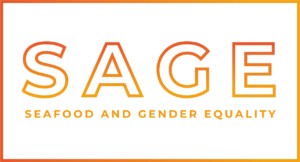Gender and Seafood
Content developed by SAGE (Seafood and Gender Equality) and FishWise


Women are present in all segments of the seafood industry, from harvest to retail to administration. However, gender barriers keep women from full and equitable participation as described in the United Nations’s Sustainable Development Goal 5. While data collected by the Food and Agricultural Organization (FAO) shows that women play a major role in the seafood industry, detailed data is still limited, making it hard to understand the full extent of power and wealth distribution. Collecting and analyzing the right data is of vital importance to the goal of creating an equitable seafood industry.
of global seafood workers are women.
of the global aquaculture workforce is women.
of workers in post-harvest and seafood processing roles are women.
Gender and work
Throughout seafood supply chains, particularly at the sourcing level, women workers may be at risk of sexual abuse, harassment, physical and emotional abuse, lower pay, and likely have less agency in the work environment. Migrant workers often face heightened vulnerability due to legal status, racial bias, language, or cultural barriers, which means that for migrant women, the risks are amplified. Although data on gender in the seafood industry is limited, findings from other applicable sectors confirm consistent challenges for women at work.
Sexual harassment in the workplace
Any unwelcome behavior or action that is explicit or sexual in nature is considered sexual harassment. It is important to emphasize that sexual harassment is defined based on impact, not intent. Sexual and gender-based harassment may look like lewd comments, unwanted sexual advances, sexual coercion, derogatory and sexist language or remarks, and sexist and offensive behaviors.
It is difficult to measure the prevalence of sexual harassment in workplaces, including in the seafood sector, because it often goes unreported. The power dynamics within any workplace make it difficult for women to report sexual harassment to supervisors and seniors who are often male. There is already an existing imbalance of power within seafood supply chains. There is added risk if workers are migrants. Women may fear retaliation, job loss or demotion, disbelief, inaction, or receipt of blame. It is estimated that over 70% of sexual harassment incidences go unreported, according to multiple studies by organizations like the Equal Employment Opportunity Commission (EEOC).
The lack of accurate reporting highlights a key gap in workplace surveys, as well as a lack of a safe reporting environment. While companies should work to prevent workplace harassment because it is the moral thing to do, they will also see legal and financial benefits, such as higher employee morale and productivity. Training and tools, like the Sexual Harassment in the Workplace Toolkit, created by the Equal Rights Advocates, can help employees recognize and report sexual harassment.
Consider implementing comprehensive training programs that address the nature, causes, and prevention of harassment, paying attention to the contexts where you operate and throughout your supply chains. Establish clear anti-harassment policies and work with your suppliers to provide multiple reporting channels for incidents. Foster a culture of inclusion and respect by promoting diversity, encouraging leadership to model respectful behavior, and holding individuals accountable. You can also collaborate with external organizations that specialize in harassment prevention and workplace safety. These strategies can help create safer, more inclusive work environments.
Economic inequity
Women do not benefit equitably in the same work and sectors as men do. Women typically get paid less for the same positions men hold, work in lower-paying industry sectors, hold fewer supervisory and managerial roles, and receive fewer returns in entrepreneurial ventures. While the gender pay gap may focus on the economic difference between working men and women, there are a combination of intersectional and systemic factors impeding women beyond the monetary ones. Significant differences in wages exist across elements of identity beyond gender (for instance, women of color make less money than white women). Keep these intersectional factors in mind. Economic inequality can be seen in five areas:
Unpaid work: Women are often engaged in unpaid and unofficial work such as net mending, bookkeeping, collecting bait, and cooking for fishers and family. They often caretake for children and elders and manage household chores and upkeep. UN Women estimates that women do as much as two and a half times more unpaid household and care work than men. This unpaid work means women have less time for paying jobs or must work twice as long, fulfilling their unofficial and official roles.
Lower-return work: Women in fisheries and other industries frequently hold post-harvest and processing roles, which are less profitable positions than fishing is. The time burden of unpaid household and childcare work can make it difficult for women to spend long periods of time away from home, so they take jobs like shrimp peeling or fish retail. Gender discrimination and cultural barriers also make it difficult for women to be hired for higher paying roles.
Limited access to resources: Access to land, ponds, coastline, capital, technology, skills, and services are all essential to establishing and maintaining a livelihood in fishing. However, women traditionally have less access to these resources, whether because of sexism in policy or lack of financial capital. Without the ability to purchase land, a right denied to women in many countries, women cannot start or run their own land-based seafood business. Without these property rights, it’s difficult to establish credit, making it near impossible to access insurance or loans. WorldFish and the FAO both point to women’s lack of access to these assets and resources as a barrier to equity in fisheries and other industries.
Household decision-making also plays a role in a woman’s right to resources. Even if a woman has credit or access to credit, the man of the household may ultimately determine how credit and savings are spent. Access to resources is also limited by a lack of training for women in industry practices and new technologies. The lack of development projects for women may be attributed to both cultural and social exclusion from the industry and the lack of data surrounding women’s contributions. Without a realistic image of women’s contributions, it is difficult to create development projects that will support and lift up them in the industry.
Exclusion from community decision-making: Women are rarely in positions of political or community power. They are not usually included in decision-making or codesigning discussions that affect their ability to earn a living or industry and professional associations that would allow them to advocate for their rights.
Limited mobility: Impediments to women’s mobility can be caused by time constraints and burdens associated with child, elder, and home care duties or by lack of access or cultural barriers to using cars, bikes, and other forms of transportation. These impediments can leave women without the ability to travel far from their homes or with longer travel times. Limited mobility may leave women with less time to do paid work or access markets or places of work.
Global challenges and gender
Women are often further marginalized during times of crisis or global change. Overfishing and habitat destruction, climate disruption, and pandemics all affect women disproportionately relative to men.
Overfishing
When fishing grounds and marine habitats become depleted, fishers must adopt new practices such as fishing further from the coast or using new fishing technology. Women often cannot access the resources necessary to adapt. Limited capital bars women from purchasing equipment like new engine components or ice boxes to preserve fish quality. Women who are caretakers may not have time to travel further to unexploited marine sites.
Climate disruption
Women are more vulnerable to climate disruption than men are. Women in rural areas depend on local natural resources for livelihoods and for the security of their families. During extreme weather, women must work harder to secure resources like firewood and water for their households, increasing their time burdens. Climate disruption in marine habitats may mean reduced productivity from reefs, sea level rise, and more destructive coastal storms. Men may be able to more fully recover from the effects of climate disruption on marine ecosystems due to their access to capital and their ability to travel further to fish. Women are more likely to suffer the consequences of climate disruption, including from the increased gender-based violence that occurs during times of crisis like displacement.
Gender equity
To achieve gender equity, we must focus on closing the gender gap in seafood. While equality means treating everyone equally (each person or group of people is given the same resources and opportunities), equity means providing resources and opportunities that fit the specific needs or circumstances of each person or group, and in that way, reach an fair outcome. The gender gap is underlaid by gender norms and power relations. Without addressing these systemic issues, we cannot effectively promote gender equity and equality.
Business actions for gender-transformative change
To engage in gender-transformative work, focus on your company’s responsibility to uplift and support women, rather than women’s individual responsibility to be a catalyst for their own change. You can do five things to help create this change:
Collect sex-disaggregated data: Information on employees, policy, and company actions must be disaggregated by sex. Sex-disaggregated data will show a more complete picture of the complexities and realities of seafood industry bias, helping you develop more inclusive policy and create equitable opportunities for women in the industry.
Look across the supply chain: Account for women across all parts of your supply chain. Informal work done by women should be included in company surveys and audits to better inform decision-making and policy.
- Seafood and Gender Equality (SAGE) is launching a program called Women Advancing a Vision for Equality in Seafood, which brings together global stakeholders from across the supply chain to advocate for gender equality.
Analyze your company: Look inward to identify how you may be upholding gender inequalities. Identify your own role as power holder by examining the practices, attitudes, and beliefs of staff members and company partners. Assess the gender breakdown of company leadership and the inclusion of women in decision-making.
- SAGE’s Gender Equality Dialogues (GED) program offers leaders within seafood companies a collaborative and supportive space as they work toward a more just and equitable industry by examining their own operations and practices. GED cohorts begin semi-annually.
Provide internal and supply chain training: Training on signs and examples of sexual harassment is crucial in both recognizing and preventing the issue. Supervisors should have training on how to approach cases of sexual harassment and how to create a safe and respectful environment so people who have experienced harassment will come forward.
- SAGE’s new Gender Equity Assessments and Recommendations (GEAR) Initiative offers seafood companies and organizations a self-assessment in addition to bespoke consultations and guidance, including internal training, to address issues of gender violence and other inequities in the workplace.
Embrace advocacy and partnership: Partnering and collaborating with organizations that specialize in gender-transformative change will help you drive your own progress as well as promote gender equity and equality across the seafood supply chain. Organizations like SAGE and Minorities in Aquaculture work to create a more inclusive seafood industry.
Gender in culture and context
To effectively address gender-based issues, consider the cultural context in which you operate. Cultural norms play a significant role in shaping gender roles, influencing workplace behavior and expectations. In many cultures, traditional gender roles are deeply ingrained, with clear distinctions about the roles men and women should fulfill, both in the family and at work. You need to understand these norms and determine how to navigate them in order to undertake efforts to promote equity.
Laws and regulations regarding gender equality also vary widely across regions. While some countries have strong protections against gender discrimination, others may have limited or no regulations in place. Understand the legal frameworks in each country you operate in to ensure compliance and avoid potential legal risks.
Societal attitudes toward gender also play a crucial role in shaping workplace dynamics. In some regions, women may face significant barriers to career advancement due to cultural practices or prevailing attitudes about gender. Failing to recognize these attitudes may overlook systemic barriers that hinder gender equality, which can affect employee morale and retention.
Moreover, cultural expectations often shape unconscious biases, which can influence hiring, promotions, and day-to-day interactions. These biases can further perpetuate inequality. Recognizing and addressing these biases can help create a work environment that is more equitable.
Gender-based issues can have a direct impact on employees’ well-being, job satisfaction, and productivity. In cultures where harassment or gender discrimination is normalized, employees may feel unsafe, unsupported, or undervalued. Failing to understand or address these cultural issues risks damaging employee trust and workplace cohesion. By understanding and taking into account these cultural factors, on the other hand, you can help ensure that your gender equality initiatives are both effective and respectful of local norms.
